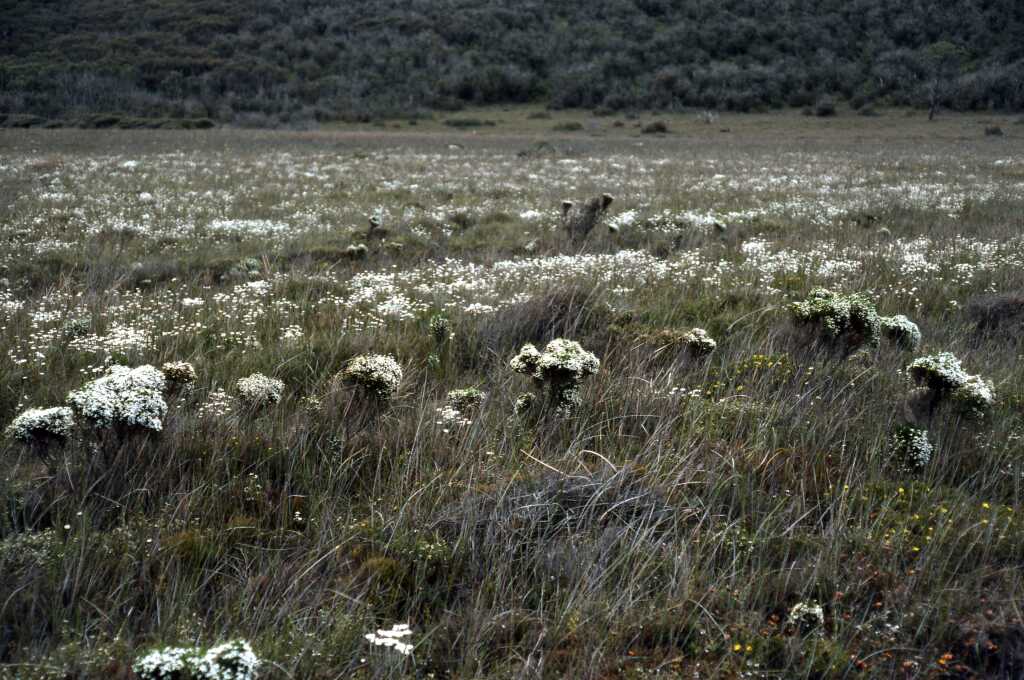Olearia teretifolia
(Sond.) Benth. Cypress Daisy-bushSlender erect (cypress-like), to spreading, glabrous shrub to c. 1.5 m high; branchlets and leaves resinous, often somewhat sticky. Leaves alternate, sessile or subsessile, usually appressed to stem, linear, 2–5 mm long, c. 0.5 mm wide, obtuse, usually slightly incurved near apex, compressed-terete; upper surface shallowly channelled; lower surface flat or shallowly channelled. Capitula 10–16 mm diam., terminal, solitary, sessile, often profuse, forming c. pyramidal panicles; involucre c. urn-shaped, 3–4 mm long; bracts 2–3-seriate, subequal or graduating, glabrous except for ciliate apex, green, purple-tipped, viscid. Ray florets 4–10, white, ligules 3.5–6 mm long; disc florets 5–10, yellow. Cypsela narrow-obovoid, 1–1.5 mm long, 6–8-ribbed, glabrous, blackish; pappus bristles pale, 2–3 mm long. Flowers Aug.–Nov.
LoM, MuM, Wim, VVP, GipP, OtP, Gold, CVU, HSF, OtR. Also SA. In Victoria rather common in box-ironbark forests and whipstick mallee of the central north (St Arnaud, Inglewood, Bendigo, Rushworth areas), with disjunct occurrences in the Torquay-Anglesea area and in the Brisbane Ranges.
All records of this species from mallee areas of far north-west Victoria pertain to the superficially very similar O. passerinoides.
Walsh, N.G.; Lander, N.S. (1999). Olearia. In: Walsh, N.G.; Entwisle, T.J., Flora of Victoria Vol. 4, Cornaceae to Asteraceae, pp. 886–912. Inkata Press, Melbourne.
 Spinning
Spinning
